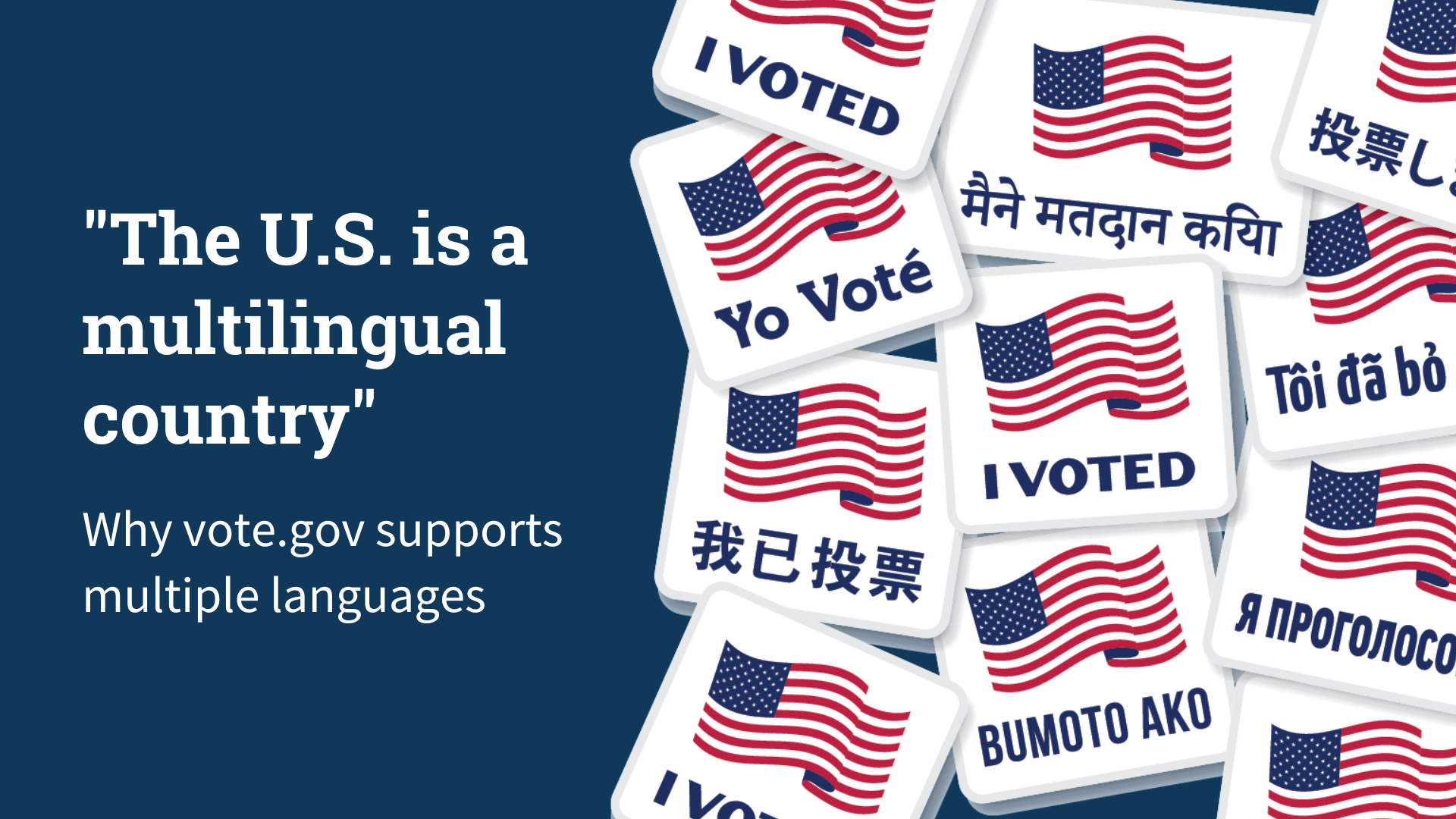To help make the voting process accessible to everyone who is eligible, vote.gov works with state election offices, federal agencies, and non-partisan organizations to create a national source of accurate voting information and clear registration instructions in multiple languages.
The U.S. is a multilingual country
According to a 2019 U.S. Census Bureau survey, nearly 68 million people in the U.S. speak a language other than English at home. And each year the U.S. welcomes more than 800,000 new citizens from all over the world.
Providing voting information in languages that reflect the diversity of U.S. citizens is an important way to help people exercise their right to vote. This is one of the foundational elements that drive our work.
We create culturally sensitive translations
The vote.gov team works with real people, not automated translation engines, to ensure that our information is accurate, reliable, and culturally sensitive. We partner with qualified language specialists at the National Language Service Corps (NLSC), a program within the Department of Defense that represents more than 500 languages and dialects. We also have an editorial team of language and cultural experts who provide additional translation and language support.
What languages does vote.gov offer?
As of March 14, 2024, in addition to English and Spanish, vote.gov is available in these languages, with more to come:
- Arabic
- Bengali
- Chinese (simplified)
- Chinese (traditional)
- French
- Haitian Creole
- Hindi
- Khmer
- Korean
- Navajo
- Portuguese
- Russian
- Tagalog
- Vietnamese
- Yup’ik
How did we choose which languages to offer?
Vote.gov focuses on languages used by groups identified by section 203 of the Voting Rights Act, mentioned in the Executive Order on Promoting Access to Voting. We also regularly review data from the U.S. Census Bureau’s American Community Survey (ACS) as well as our site traffic to better understand which languages people are using and help inform which translations we launch next.
Census data tells us that the top languages spoken in the United States (besides English) include Spanish, Chinese, Tagalog, Vietnamese, and Korean. Our analysis of site data confirms that the top non-English browser languages visiting vote.gov in 2022 were Spanish and Chinese.
Share vote.gov
Know someone who speaks one of the languages we offer and is new to voting? Send them to vote.gov. They can use the language menu on the home page to select their preferred language and begin to participate in the voting process to make their voice heard.
If you’re from a federal agency looking for new ways to reach your audience, learn about partnering with us at usa.gov/partnerships.




_v003.png)